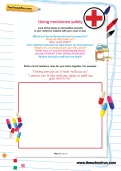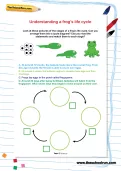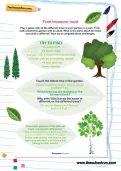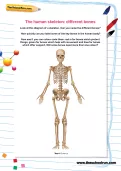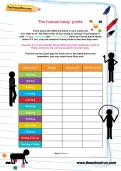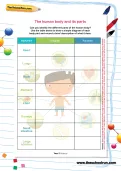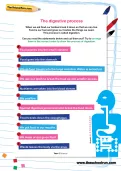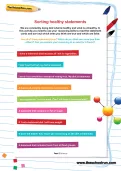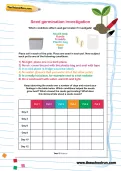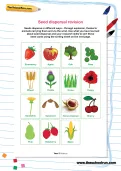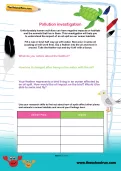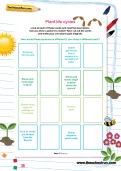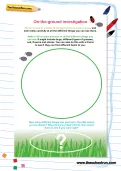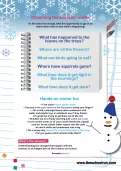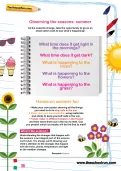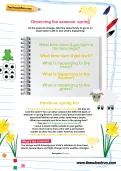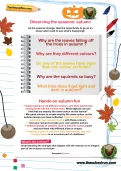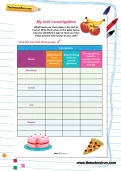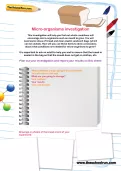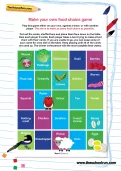Look at the labels on the bottles and pills in your medicine cabinet with your mum or dad. Can you answer these questions about them?
or
Register to add to your saved resources
Already a subscriber? to view this content.
Look at these pictures of the stages of a frog’s life cycle. Can you arrange them into a cycle diagram? Can you read the statements and match them to each stage?
or
Register to add to your saved resources
Already a subscriber? to view this content.
Play a game with all the different trees in your garden or a park. First, walk around the garden with an adult. What is the same about the trees and what is different? Now try to complete these challenges.
or
Register to add to your saved resources
Look at this diagram of a skeleton. Can you name the different bones? How quickly can you label some of the key bones in the human body? Now see if you can colour code them.
or
Register to add to your saved resources
Already a subscriber? to view this content.
Think about the different joints in your body and how they work. We often refer to your body as having 3 main types of joint – hinge, universal and ball and socket. Have you learnt about these before? If not, why not research these joints to see how they work. Now see if you can identify these different joints needed for each of these actions to be carried out by the human body.
or
Register to add to your saved resources
Already a subscriber? to view this content.
Can you identify the different parts of the human body? Use the table to draw a simple diagram of each body part and record a brief description of what it does.
or
Register to add to your saved resources
Already a subscriber? to view this content.
When we eat food our bodies break it down so that we can live. Food is our fuel and gives our bodies the things we need. This process is called digestion. Can you read the statements below and cut them out? Try to arrange them in the correct order to show the process of digestion.
or
Register to add to your saved resources
Already a subscriber? to view this content.
We are constantly being told what is healthy and what is unhealthy. In this activity you need to use your reasoning skills to read the statement cards and sort out which ones you think are true and which are false.
or
Register to add to your saved resources
Already a subscriber? to view this content.
Let's investigate which conditions affect seed germination!
or
Register to add to your saved resources
Seeds disperse in different ways – through explosion, thanks to animals carrying them and via the wind. Use what you have learned about seed dispersal and your research skills to sort these
seed cards using the sorting sheet on the next page.
or
Register to add to your saved resources
Already a subscriber? to view this content.
Unfortunately human activities can have negative impacts on habitats and the animals that live in them. This investigation will help you to understand the impact of an oil spill on our ocean habitats.
or
Register to add to your saved resources
Already a subscriber? to view this content.
Look at each of these cards and read the description. Can you draw a picture to match? Now cut out the cards and make your own plant cycle diagram. How would these pictures be different if you chose a different plant?
or
Register to add to your saved resources
Already a subscriber? to view this content.
Throw a hoop or a circle of string around an area of grass and look really carefully at all the different things you can see there. Make a list or draw pictures of all the different things you can see. It might include bugs, different types of grasses, soil, flowers and stones. You can also do this with a friend to see if they can find different items to you.
or
Register to add to your saved resources
Already a subscriber? to view this content.
As the seasons change, take the opportunity to go on an observation walk to see what’s happening! Here are some great ideas for hands-on winter fun!
or
Register to add to your saved resources
As the seasons change, take the opportunity to go on an observation walk to see what’s happening! Here are some great hands-on fun activities for summer!
or
Register to add to your saved resources
As the seasons change, take the opportunity to go on an observation walk to see what’s happening! Here are some great hands-on Spring fun ideas.
or
Register to add to your saved resources
As the seasons change, take the opportunity to go on an observation walk to see what’s happening! Here are lots of suggestions for fun things to look for on your autumn work.
or
Register to add to your saved resources
What foods you have eaten in the last 24 hours? Write them down in the table below. Can you identify the type of food you have eaten and the role it plays in your diet?
or
Register to add to your saved resources
Already a subscriber? to view this content.
This investigation will help you find out which conditions will encourage micro-organisms such as mould to grow.
or
Register to add to your saved resources
Already a subscriber? to view this content.
The aim of this game is to make as many food chains as possible.
or
Register to add to your saved resources
